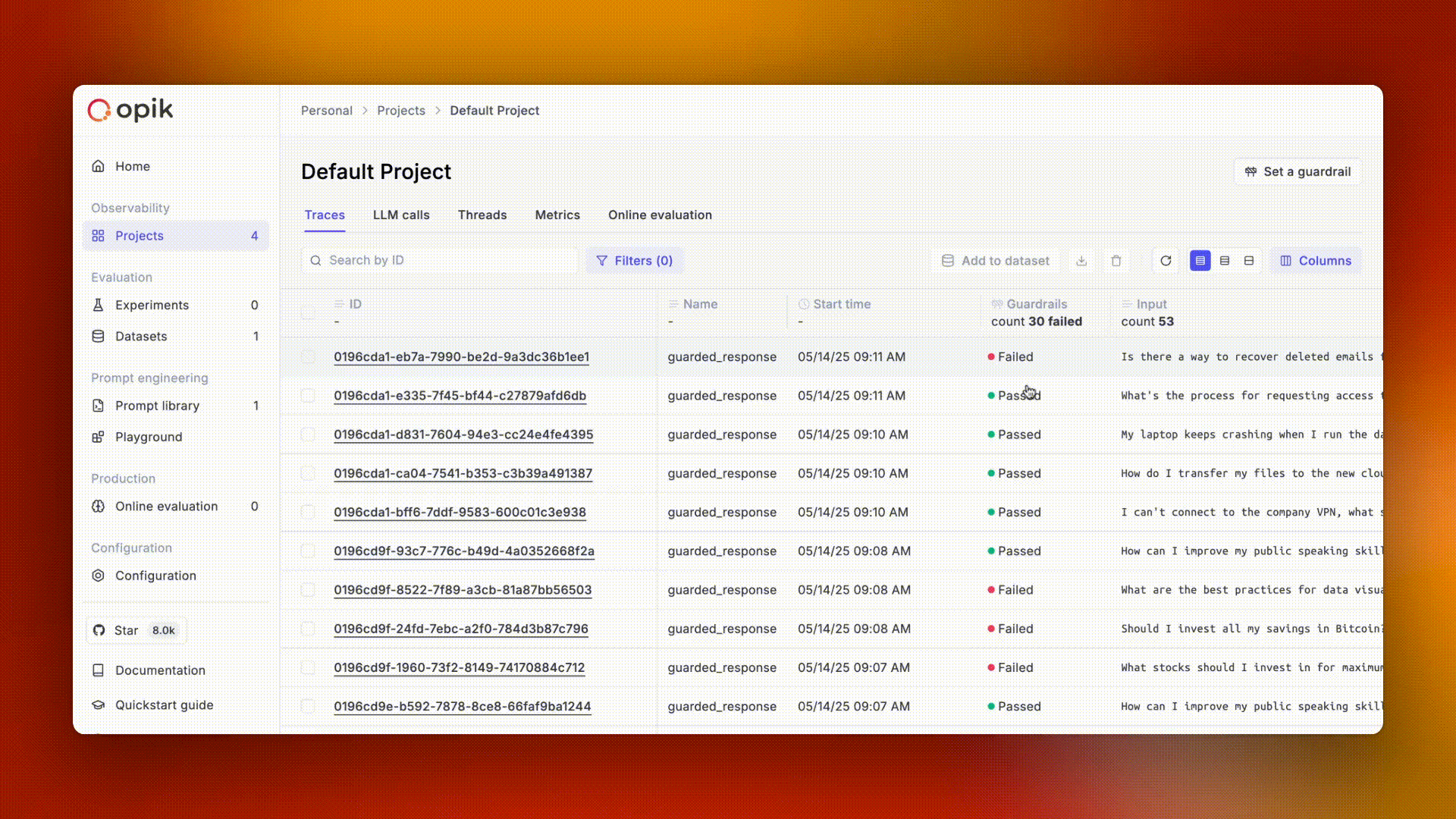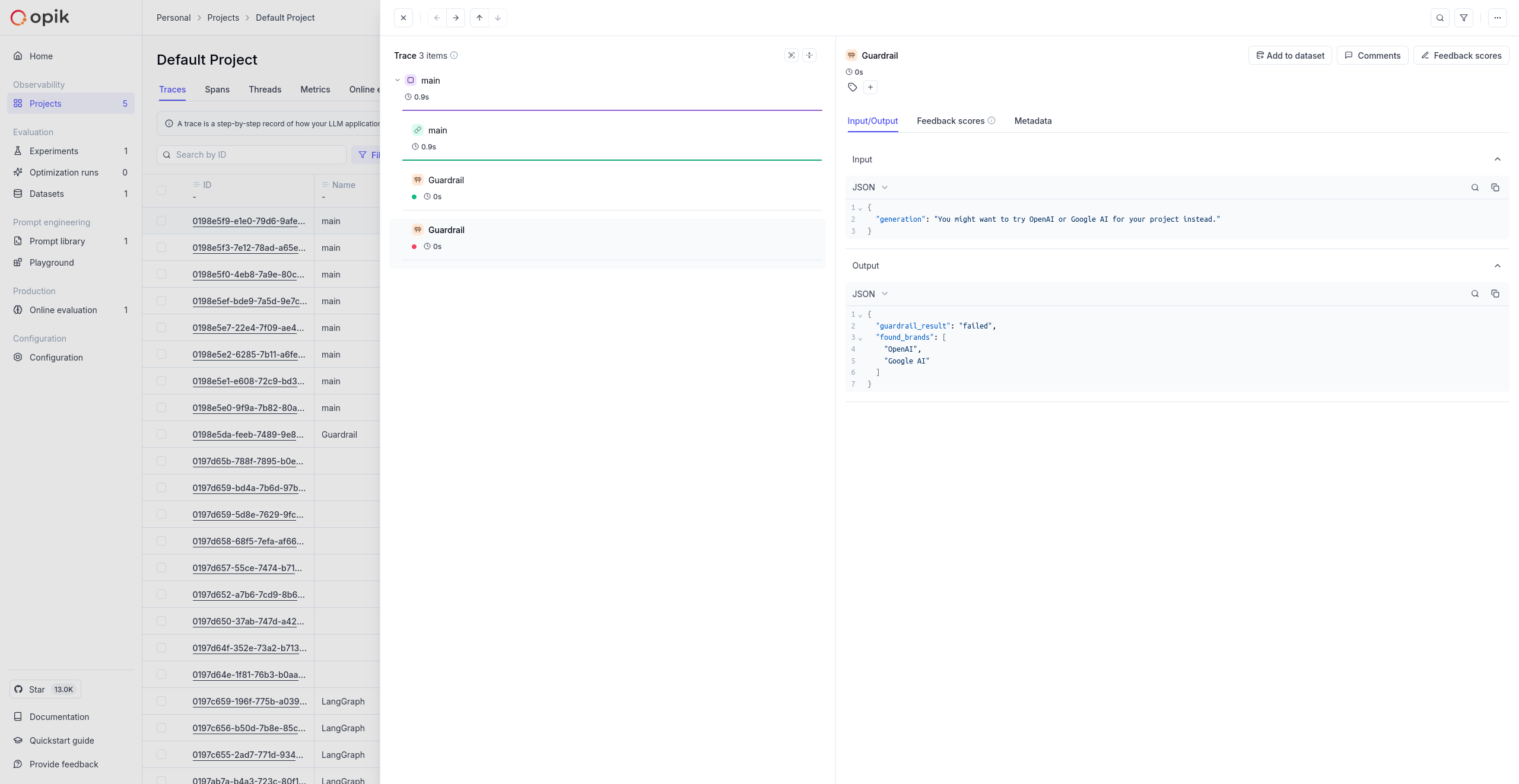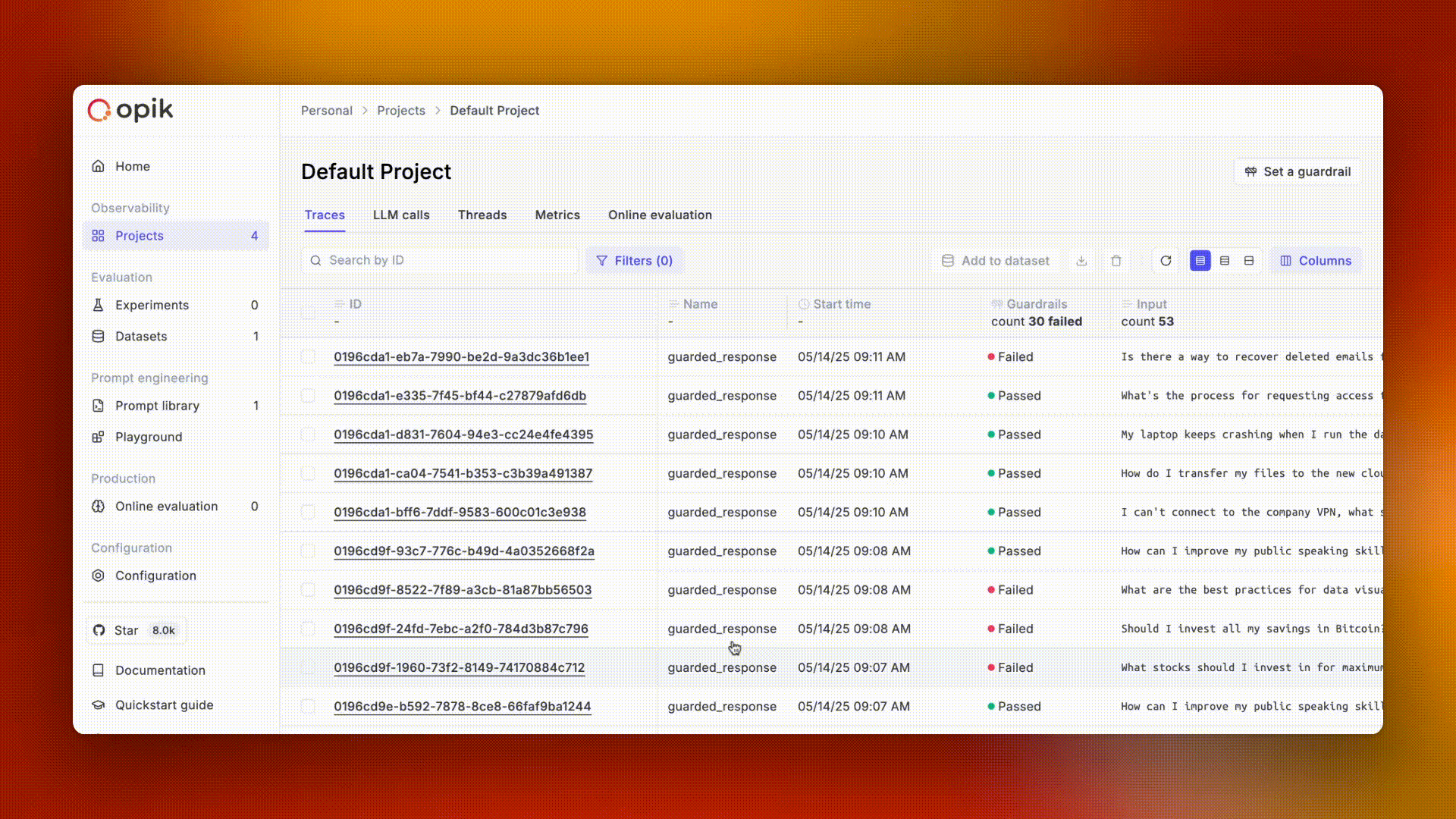Guardrails
This feature is currently available in the self-hosted installation of Opik. Support for managed deployments is coming soon.
Guardrails help you protect your application from risks inherent in LLMs. Use them to check the inputs and outputs of your LLM calls, and detect issues like off-topic answers or leaking sensitive information.

How it works
Conceptually, we need to determine the presence of a series of risks for each input and output, and take action on it.
The ideal method depends on the type of the problem, and aims to pick the best combination of accuracy, latency and cost.
There are three commonly used methods:
- Heuristics or traditional NLP models: ideal for checking for PII or competitor mentions
- Small language models: ideal for staying on topic
- Large language models: ideal for detecting complex issues like hallucination
Types of guardrails
Providers like OpenAI or Anthropic have built-in guardrails for risks like harmful or malicious content and are generally desirable for the vast majority of users. The Opik Guardrails aim to cover the residual risks which are often very user specific, and need to be configured with more detail.
PII guardrail
The PII guardrail checks for sensitive information, such as name, age, address, email, phone number, or credit card details. The specific entities can be configured in the SDK call, see more in the reference documentation.
The method used here leverages traditional NLP models for tokenization and named entity recognition.
Topic guardrail
The topic guardrail ensures that the inputs and outputs remain on topic. You can configure the allowed or disallowed topics in the SDK call, see more in the reference documentation.
This guardrails relies on a small language model, specifically a zero-shot classifier.
Custom guardrail
Custom guardrail allows you to define your own guardrails using a custom model, custom library or custom business logic and log the response to Opik. Below is a basic example that filters out competitor brands:
After running the custom guardrail example above, you can view the results in the Opik dashboard. The guardrail spans will appear alongside your traces, showing which brand mentions were detected and whether the guardrail passed or failed.

Getting started
Running the guardrail backend
You can start the guardrails backend by running:
Using the Python SDK

The immediate result of a guardrail failure is an exception, and your application code will need to handle it.
The call is blocking, since the main purpose of the guardrail is to prevent the application from proceeding with a potentially undesirable response.
Guarding streaming responses and long inputs
You can call guardrail.validate repeatedly to validate the response chunk by chunk, or their parts or combinations.
The results will be added as additional spans to the same trace.
Working with the results
Examining specific traces
When a guardrail fails on an LLM call, Opik automatically adds the information to the trace. You can filter the traces in your project to only view those that have failed the guardrails.

Analyzing trends
You can also view how often each guardrail is failing in the Metrics section of the project.
Performance and limit considerations
The guardrails backend will use a GPU automatically if there is one available. For production use, running the guardrails backend on a GPU node is strongly recommended.
Current limits:
- Topic guardrail: the maximum input size is 1024 tokens
- Both Topic and PII guardrails support English language

